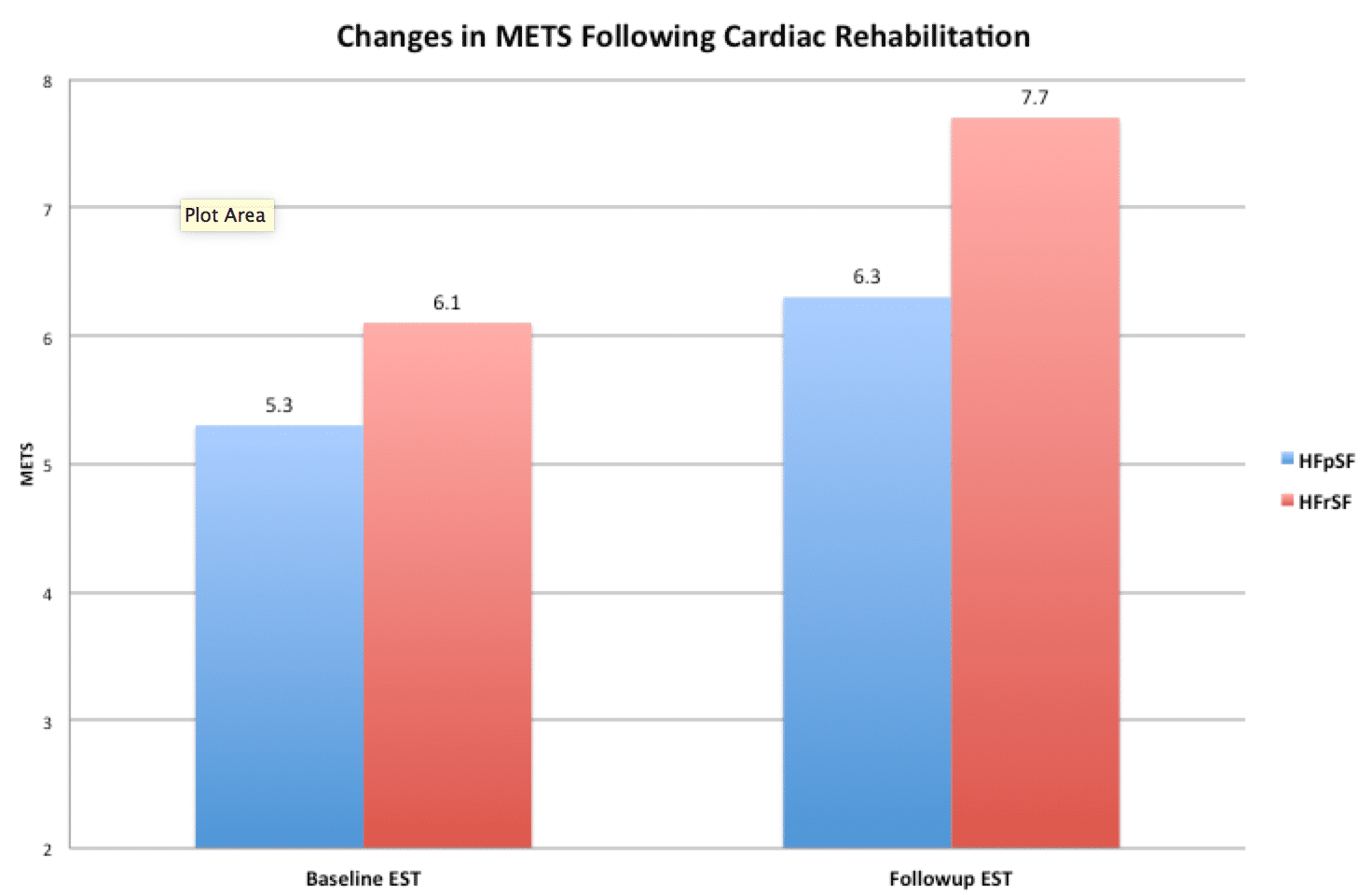Objective:
To evaluate the functional improvement of subjects with heart failure (HF) enrolled in the multicenter Israeli National Cardiac Rehabilitation Registry.
Methods and Results:
We evaluated the changes in exercise capacity in 140 patients with HF, mostly male (74%), 65±12 years old, of which 23% had heart failure with preserved systolic function (HFpSF). Exercise capacity (EC) was evaluated by a symptom-limited stress tests performed prior to, and again 3-5 months following enrollment in the cardiac rehabilitation program. Change in EC was derived from the change in metabolic equivalents (METS). An overall significant improvement was noted from an average 5.9 METS at baseline to 7.4 METS (median 1.1 METS absolute gain; p<0.001). Patients with HFpSF, presenting with lower FC at baseline improved to a similarly extent compared to those with reduces systolic function (Figure; 30% vs. 38% percent METS gained; p=0.4). Consistently, in multivariate analysis, left ventricular ejection fraction was not associated with the METS improvement above median (> 1.1 METS increase; odds ratio(OR) 1.01; 95% confidence interval: 0.38-2.66).
Conclusion:
During participation in a Cardiac Rehabilitation program patients with HFpSF improved significantly and comparably to patients with systolic dysfunction. The opportunity to participate in Cardiac Rehabilitation should be equally available to all HF patients.


